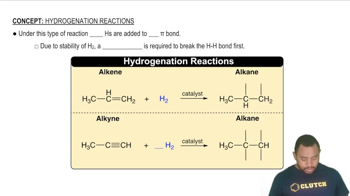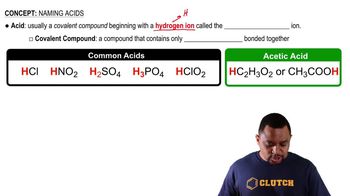Here are the essential concepts you must grasp in order to answer the question correctly.
Polarity and Solubility
The principle of 'like dissolves like' states that polar solvents dissolve polar solutes, while nonpolar solvents dissolve nonpolar solutes. Water is a polar solvent due to its bent molecular shape and the presence of a significant electronegativity difference between oxygen and hydrogen. In contrast, benzene is a nonpolar solvent, which affects the solubility of substances like acetic acid.
Recommended video:
Hydrogen Bonding
Acetic acid can form hydrogen bonds due to the presence of a hydroxyl (-OH) group. This ability to engage in hydrogen bonding significantly enhances its solubility in polar solvents like water, where such interactions can occur. In nonpolar solvents like benzene, acetic acid cannot form these interactions, leading to lower solubility.
Recommended video:
Molecular Structure of Acetic Acid
Acetic acid (CH3COOH) has a carboxylic acid functional group, which contributes to its polar nature. The presence of both a hydrophobic methyl group (CH3) and a hydrophilic carboxyl group (COOH) influences its solubility. The polar carboxyl group interacts favorably with water, making acetic acid more soluble in water than in nonpolar solvents like benzene.
Recommended video:
Acids and Their Structure




